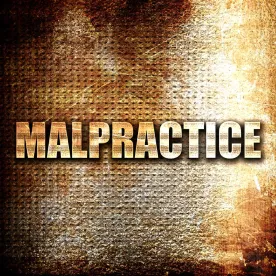On June 27, the Wisconsin Supreme Court issued its long-awaited decision in Mayo v. Wisconsin Injured Patients and Families Compensation Fund, 2018 WI 78. On a 5-2 vote, the Court upheld the state’s medical malpractice damages cap for noneconomic damages and overruled its 2005 decision striking down an earlier cap. The decision will have ramifications well beyond medical malpractice, as it clarifies the standards of review courts should apply to all constitutional challenges to state laws.
Background
In 1975, the Wisconsin legislature set up a comprehensive system to address medical malpractice claims. Eleven years later, in 1986, the legislature established a $1 million cap on the damages a medical malpractice plaintiff could recover for noneconomic injuries (i.e. pain and suffering, etc.).
That cap expired after five years and the legislature later enacted a new $350,000 cap. In 2005, the Wisconsin Supreme Court found that cap unconstitutional in Ferdon ex rel. Petrucelli v. Wis. Patients Comp. Fund, 2005 WI 125. Shortly thereafter, the legislature instituted a new $750,000 cap. The $750,000 cap remained the law until the appellate court found it unconstitutional in Mayo.
The facts of Mayo are grave. The lead plaintiff, Ascaris Mayo, had all four of her limbs amputated as a result of dry gangrene she developed after an untreated infection. Her medical malpractice suit went to trial, where she obtained an award of $15 million for noneconomic damages. After the verdict, the defendant moved to reduce the award to $750,000, consistent with Wisconsin’s damages cap. The trial court denied the motion, holding that the cap was unconstitutional “as applied” to Mayo on equal protection and due process grounds. The court of appeals affirmed, with a broader rationale, finding the cap “unconstitutional on its face because it . . . impos[es] an unfair and illogical burden only on catastrophically injured patients, thus denying them the equal protection of the laws.”
The Supreme Court Holding
The Supreme Court reversed, concluding that the $750,000 cap on noneconomic damages was constitutional, both facially and as applied. In reaching its decision, the Court had to initially address Ferdon, as that opinion from only thirteen years earlier had found a similar cap unconstitutional.
Historically, constitutional challenges to state legislation have been analyzed under either a “strict scrutiny” test or a “rational basis” standard. Strict scrutiny applies when the legislation restricts a fundamental constitutional right or affects a protected class. The rational basis standard is used in all other instances and the court simply determines whether there is a rational basis for the legislation.
Ferdon had introduced a third test somewhere between strict scrutiny and rational basis review. The Court had dubbed this intermediate approach “rational basis with teeth,” which was a way of saying that the Court would apply a more searching inquiry in evaluating whether there were legitimate grounds for the legislation.
The Mayo Court categorically rejected this standard and overruled Ferdon, holding that “[r]ational basis with teeth has no standards for application, usurps the policy forming role of the legislature and creates uncertainty under the law.”
Applying the traditional rational basis test, the Mayo Court found that the legislature had rational reasons to conclude that a $750,000 cap on noneconomic damages would keep health care affordable for all while still offering reasonable compensation to injured people. As the Court explained, “[b]y enacting the cap, the Legislature made a legitimate policy choice, knowing that there could be some harsh results for those who suffered medical malpractice and would not be able to recover the full amount of their noneconomic damages.”
The dissenters, Justices Walsh Bradley and Abrahamson, saw it differently, concluding that “[o]nly those with the most catastrophic injuries will be denied a full and fair damages award . . . It makes no sense that those who are injured most get the least.”
The Court’s decision on the rational basis standard made an immediate impact, as the Court applied that standard in another decision (Porter v. State of Wisconsin, 2018 WI 79) released on the very same day, upholding the constitutionality of the legislation challenged there.



 />i
/>i

